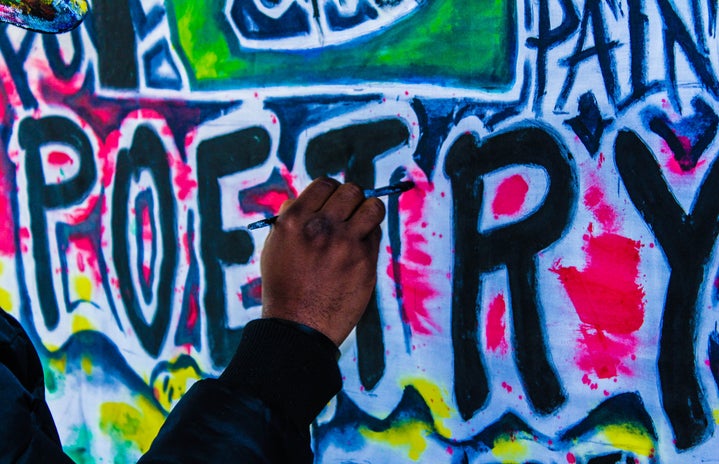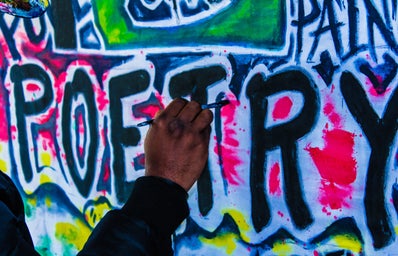Poetry is something that can be really accessible to anyone. There’s so much flexibility in what poetry is and what it can be. The proof of that is in all of the self-published poetry books on the shelves in stores like Target (which are some of my favorite books to read currently), the videos of people posting their spoken-word performances, and the Instagram posts people share with their own poetry. One form of poetry that I particularly enjoy is blackout poetry, introduced to me by two very good friends.
In blackout poetry, you need a few supplies. First, you need a book of some sort, something to use to create your poems. I like to use one book and create a lot of poems, that way I’m creating my own sort of poetry collection. Then you need markers. I like to use black permanent markers: one fine-tip and one regular one. I also sometimes will use a pencil and something with a flat edge, like a business card or a ruler. Last, you need a sheet of paper to put behind the page you’ll be working on so that the ink from the permanent markers doesn’t bleed onto other pages you can potentially use. One of my friends also uses colored markers, to create different kinds of visual aesthetics.
The supplies that I use when doing blackout poetry, as described above. By Ally Gall
After getting all your supplies in place, it’s time to find a page to use for your poem. I usually flip through the book I’m using. Depending on my mood, sometimes I find a shorter page and sometimes I find a longer page. Then I look through the page and see if any particular words stick out to me. If they don’t, I move onto a different page. If I do, I underline it with my pencil and begin to create my poem. I underline the rest of the words I want in pencil, marking out the entire poem.
The next step can take form in a multitude of ways. Sometimes, I’ll create boxes around my chosen words with my fine tip marker, and then use my larger permanent markers to color around the words, filling the entire page or the block of text. These are some of my favorites, as you have a lot of different options with them. You can have a longer poem and have more white space, or only have a few words and color the entire page.
Here are three examples of different ways to use a larger permanent marker to block out a page or blocks of text. By Ally Gall.
Other times, instead of blocking the entire page out, I’ll use my fine tip to put a single line through the words I don’t want to use. I mostly use this tactic with poems or short prose that are shorter. For me, it comes off cleaner.
Here are two examples of ways I’ve only crossed out the words I wasn’t using, while not blocking the entire page. By Ally Gall
The reason blackout poetry is my favorite poetry form is that I’m able to destroy and create at the same time. Most of the time when I turn to blackout poetry, I’m deep in my feelings and emotions. It’s a way for me to put the negative energy I’m having into something destructive, while also creating something.



